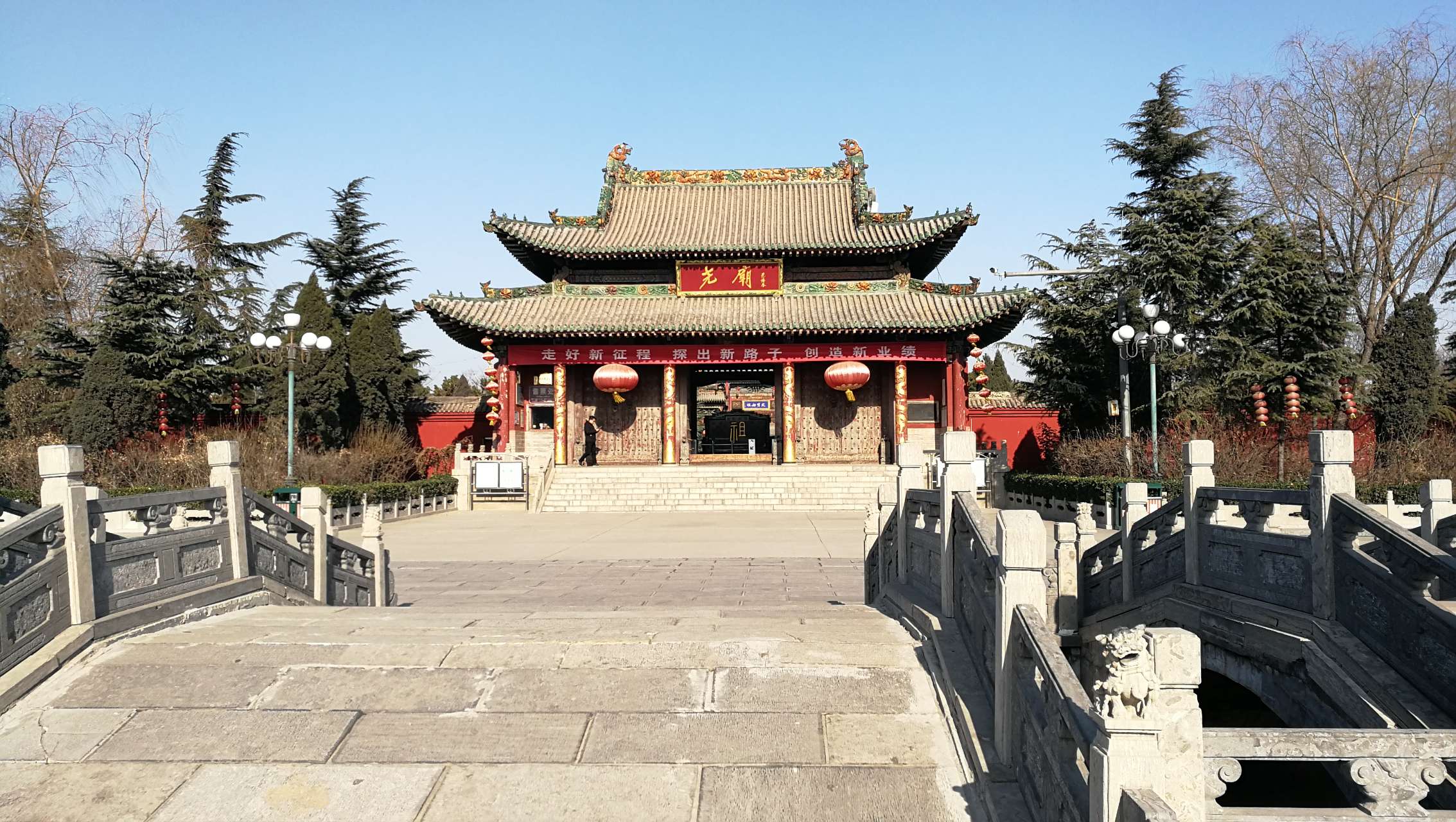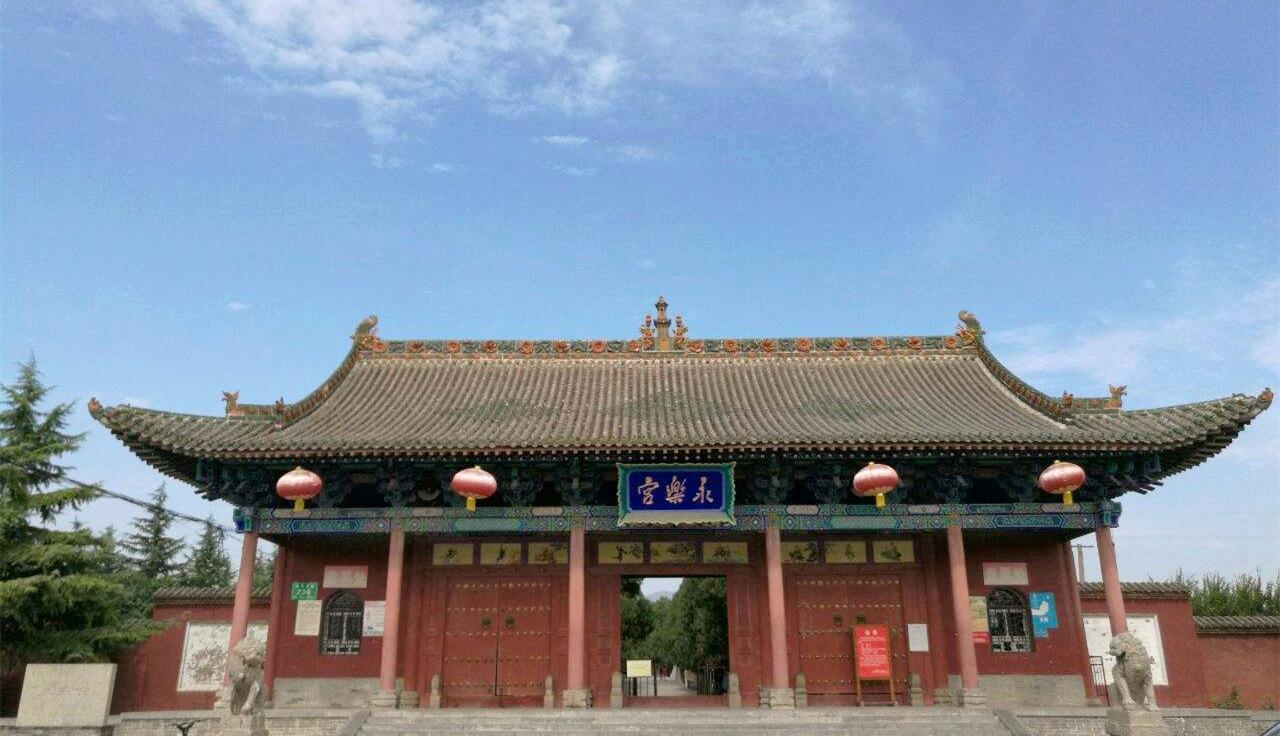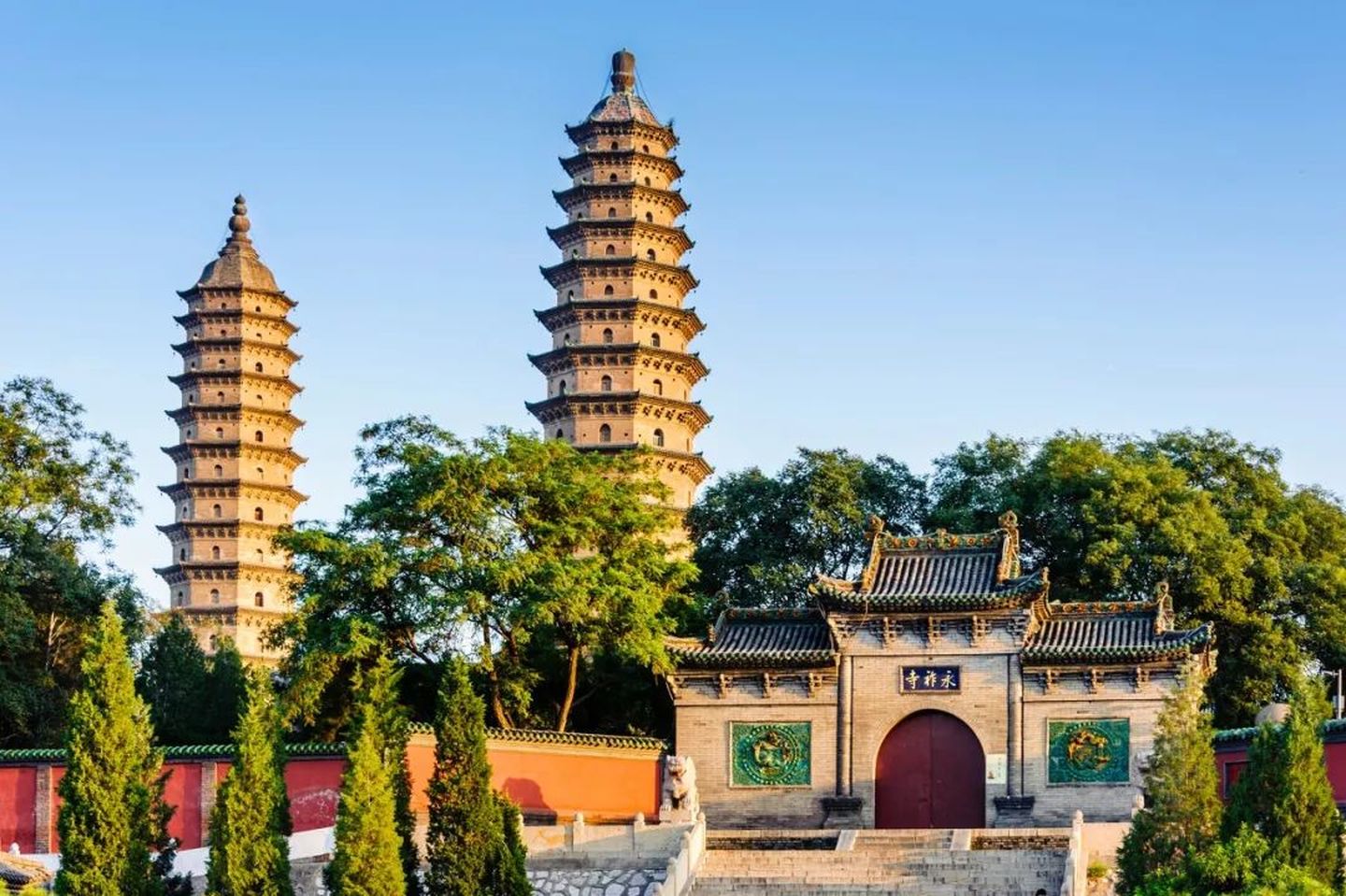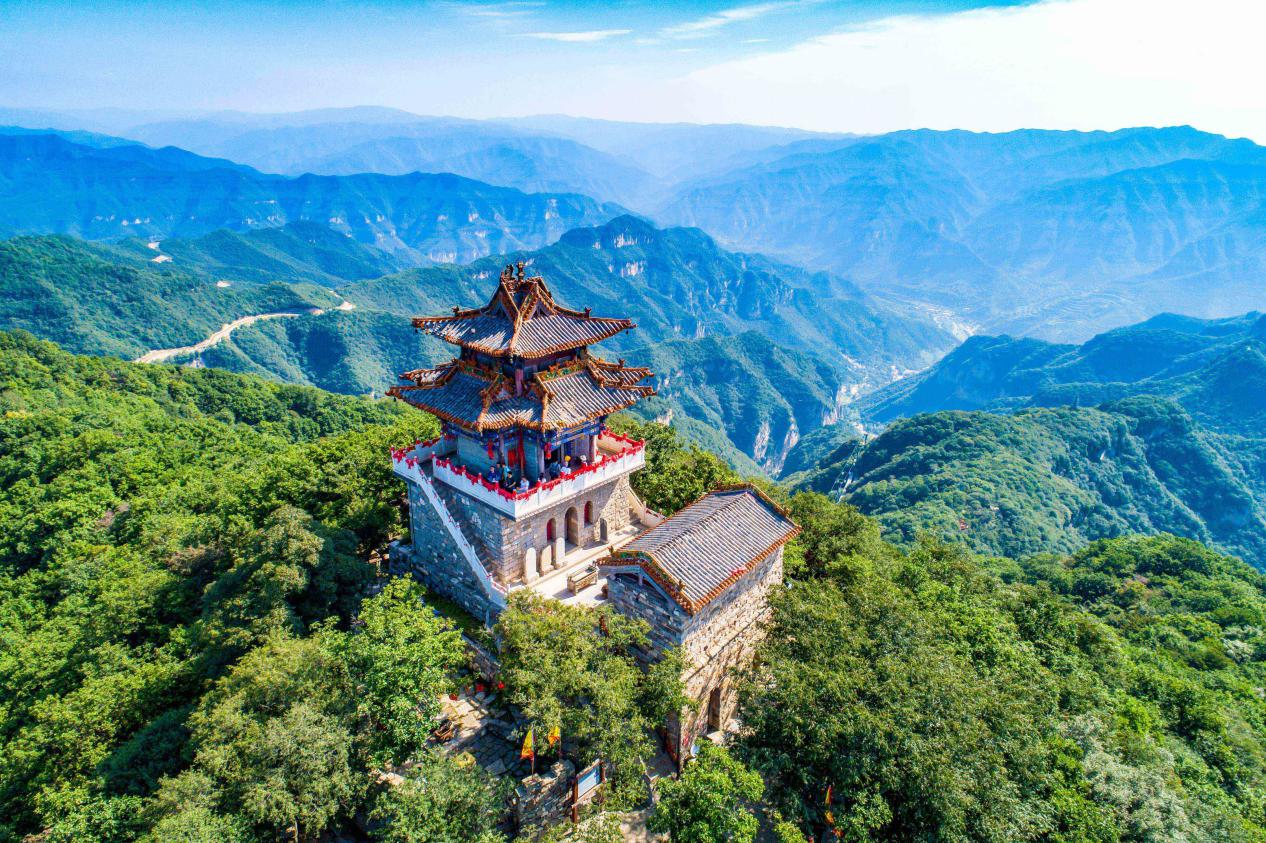
Deutsch-Chinesische Enzyklopädie, 德汉百科
 Shanxi Sheng-SX
Shanxi Sheng-SX
 *Ancient Times Figures, Myths and Legends
*Ancient Times Figures, Myths and Legends
 Gansu Sheng-GS
Gansu Sheng-GS
 Hebei Sheng-HE
Hebei Sheng-HE
 Henan Sheng-HA
Henan Sheng-HA
 Shaanxi Sheng-SN
Shaanxi Sheng-SN
 Shanxi Sheng-SX
Shanxi Sheng-SX






Der Yongding He (chinesisch 永定河, Pinyin Yǒngdìng Hé, W.-G. Yung-ting Ho) ist der größte Fluss in Peking und der größte Nebenfluss des Hai He in China.
Seine Gesamtlänge beträgt 650 km. Er entspringt im Gebirge Guancen Shan 管涔山 im Kreis Ningwu 宁武县 im Norden der Provinz Shanxi, fließt durch die Innere Mongolei, Hebei sowie die Gebiete der regierungsunmittelbaren Städte Peking und Tianjin.
Zu seinem Flussnetz gehören die Flüsse Sanggan He 桑干河, Yang He 洋河, Qingshui He 清水河 (Zhangjiakou) und Shuiding Xinhe 永定新河.
永定河(满语:ᡝᠨ᠋ᡨᡝ᠋ᡥᡝᠮᡝ
ᡨ᠋ᠣᡴ᠋ᡨ᠋ᠣᡥᠣ
ᠪᡳᡵᠠ,穆麟德转写:Enteheme Toktoho bira),古称㶟水,隋代称桑干河,金代称卢沟,元代称浑河,旧名无定河,海河流域七大水系之一,是河北系的最大河流。流域面积47,016平方千米,其中山区面积45,063平方千米,平原面积1,953平方千米。永定河全长747公里,流经内蒙古、山西、河北三省区、北京、天津两个直辖市、共43个县市。全流域面积4.7万平方公里。
永定河上游的桑干河和洋河两大支流,在河北省怀来县朱官屯汇合,以下的河段称永定河,在延庆区汇入妫水河,经官厅水库流入官厅山峡(官厅水库至三家店区间)。从官厅至朱官屯河长30公里,官厅山峡河长108.7千米,至门头沟三家店流入平原。从三家店以下至天津的入海口,河道全长大约200公里。根据水利系统人们将永定河分为三家店至卢沟桥、卢沟桥至梁各庄、永定河泛区和永定新河四段。
永定河因为经常泛滥更改河道,得名“无定河”。康熙帝改名“永定河”。

永乐宫,原名大纯阳万寿宫,为纪念八仙之一吕洞宾而建,因地处永乐镇,俗称永乐宫, 国家首批全国重点文物保护单位, 位于芮城县城北3公里的龙泉村东侧。 永乐宫创建于公元1247年至1358年间,是中国现存最大、保存最为完整的道教宫观,同北京的白云观、陕西鄠邑区的重阳宫并称为全真道教三大祖庭。
Der Yongle Gong (chinesisch 永樂宮 / 永乐宫, Pinyin Yǒnglè Gōng, englisch Yongle Temple/Palace of Eternal Joy/Eternal Happiness Temple) ist ein daoistischer Tempel aus der Yuan-Dynastie im Kreis Ruicheng in der chinesischen Provinz Shanxi. Er ist berühmt für seine Wandgemälde. Der Tempel ist Lü Dongbin gewidmet.


运城市,简称“运”,古称河东,别称凤凰城,山西省辖地级市,位于山西西南部,北依吕梁山与临汾接壤,东峙中条山和晋城毗邻,西、南分别与陕西渭南、河南三门峡隔黄河相望。运城古称“河东”,因“盐运之城”得名,是中华文明的重要发祥地之一 。华夏民族的始祖黄帝、炎帝、蚩尤,尧、舜、禹,都相继活动在河东大地上。尧初都蒲坂,后迁平阳,舜都蒲坂,禹都安邑,中国首个奴隶制社会——夏也是在这里诞生 。运城市垣曲县的“中华世纪曙猿”化石把人类起源向前推进了1000多万年。芮城县的西侯渡文化遗址,是考古界发现的人类最早用火的实证。诞生了春秋商人猗顿、东汉末年名将关羽、初唐诗人王勃、中唐文人柳宗元、史学大家司马光、戏曲名家关汉卿等文武俊秀,闻喜裴氏家族曾出过59位宰相、59位大将军,史称“将相接武、公侯一门”,形成了关公文化、根祖文化、盐文化、德孝文化等具有鲜明特色的地域文化。
运城市现辖1个市辖区、10个县,代管2个县级市。 市辖区:盐湖区 县级市:永济市、河津市 县:临猗县、万荣县、闻喜县、稷山县、新绛县、绛县、垣曲县、夏县、平陆县、芮城县
Yuncheng (运城市, Yùnchéng Shì) ist eine Stadt im Süden der chinesischen Provinz Shanxi mit 4.774.508 Einwohnern (Stand: Zensus 2020)[1] auf einer Fläche von 14.183 km². In dem eigentlichen städtischen Siedlungsgebiet von Yuncheng leben 692.003 Menschen (Stand: Zensus 2020).[2] Sie grenzt an die Städte Jincheng und Linfen im Osten und Norden und an die Provinzen Shaanxi und Henan im Westen und Süden.

Die Yúngāng-Grotten (chinesisch 雲岡石窟 / 云冈石窟, Pinyin yúngāng shíkū – „Wolkengrat Felsenhöhlen“), früher Wuzhoushan Grotten, sind frühe buddhistische Höhlentempel in der chinesischen Provinz Shanxi. Die Grotten liegen in der Großgemeinde Yungang (云冈镇) des Stadtbezirks Nanjiao der Stadt Datong, ca. 16 km westlich des Stadtzentrums im Tal des Shi Li Flusses am Fuß des Wuzhou Shan. Die meisten wurden zwischen 460 und 525 n. Chr. während der Nördlichen Wei-Dynastie aus dem Sandstein herausgearbeitet. Die Gesamtanlage besteht aus 252 Grotten und Nischen. Sie gehört seit 2001 zum UNESCO-Welterbe.
云冈石窟位于中国山西省大同市西郊,主要建于北魏兴安二年(453年)到太和十九年(495年)间[1],是中国第一处由皇室显贵主持开凿的大型石窟。整个窟群分东、中、西三部分。东部的石窟多以佛塔为主,又称塔洞;中部“昙曜五窟”是云冈开凿最早,气魄最大的窟群;西部窟群时代略晚,大多是北魏迁都洛阳后的作品。石窟依山开凿,在武州河北岸东西绵延1公里,主要洞窟达51个(其中保存较好的约20个[1]),整个窟群共有大小佛蹲1100多个,大小佛像51000多尊,最大佛像高达17米,最小佛像仅有2厘米高。最大石窟是第6窟(北魏孝文帝时开凿),由地面到窟顶高达20米。
1961年云冈石窟被中华人民共和国国务院列为第一批全国重点文物保护单位。2001年云冈石窟被列为世界文化遗产。云冈石窟与甘肃敦煌莫高窟、河南洛阳龙门石窟等中国著名石窟列为世界文化遗产。
雲崗石窟(うんこうせっくつ)は、中華人民共和国山西省大同市の西方20kmに所在する、東西1kmにわたる約51窟の石窟寺院。「雲崗石窟」としてユネスコの世界遺産(文化遺産)に登録されている[1]。現地名は雲岡石窟(拼音: Yúngāng shíkū)と表記され、色々な専門書においてもその記述で統一されている上に、中国でのオフィシャルサイトの登録も全て「雲岡石窟」及び簡体字表記の「云冈石窟」で統一されている。
The Yungang Grottoes (Chinese: 云冈石窟; pinyin: Yúngāng shíkū), formerly the Wuzhoushan Grottoes (Wuzhou Shan 武州山 / 武周山), are ancient Chinese Buddhist temple grottoes near the city of Datong in the province of Shanxi. They are excellent examples of rock-cut architecture and one of the three most famous ancient Buddhist sculptural sites of China. The others are Longmen and Mogao.
The site is located about 16 km west of the city of Datong, in the valley of the Shi Li river at the base of the Wuzhou Shan mountains. They are an outstanding example of the Chinese stone carvings from the 5th and 6th centuries. There are 53 major caves, along with 51,000 niches housing the same number of Buddha statues. Additionally, there are around 1,100 minor caves. A Ming Dynasty-era fort is still located on top of the cliff housing the Yungang Grottoes.[1]
The grottoes were excavated in the south face of a sandstone cliff about 2600 feet long and 30 to 60 feet high. In 2001, the Yungang Grottoes were made a UNESCO World Heritage Site. The Yungang Grottoes are considered by UNESCO to be a "masterpiece of early Chinese Buddhist cave art... [and] ...represent the successful fusion of Buddhist religious symbolic art from south and central Asia with Chinese cultural traditions, starting in the 5th century CE under Imperial auspices."[2] It is classified as a AAAAA scenic area by the China National Tourism Administration.
Les grottes de Yungang (chinois : 云冈石窟 ; pinyin : yúngāng shíkū), à 16 km. de Datong dans la province de Shanxi, sont l'un des plus célèbres sites anciens de sculpture en Chine. On compte 53 cavernes1 pour environ 50 000 statues, aménagées entre les ve – vie siècle, sous la dynastie Tabghach des Wei du Nord. Les travaux commencent vers 460 après qu'un moine, Tan Yao, a suggéré à l'empereur Wencheng de cesser les persécutions que ses prédécesseurs lançaient périodiquement contre les communautés bouddhiques et se servir, au contraire, de ces communautés pour affermir son pouvoir. Les cinq cavernes réalisées sous la direction de Tan Yao sont considérées comme un chef-d'œuvre classique du premier apogée de l'art rupestre bouddhique en Chine.
Les deux autres très grands sites de cavernes anciennes en Chine sont les grottes de Longmen et de Mogao, mais il en existe de nombreux, moins grandioses.
Les cavernes de Yungang sont inscrites sur la liste du patrimoine mondial de l'UNESCO en 2001.
Le Grotte di Yungang (云冈石窟T, Yúngāng ShíkūP) sono un antico sistema di caverne che si trova nei pressi di Datong, nella provincia dello Shanxi, in Cina. Esse sono uno dei migliori esempi di architettura scavata nella roccia e dei tre più famosi sistemi di grotte della Cina, insieme alle grotte di Mogao e alle grotte di Longmen.
Le grotte vennero scavate principalmente durante la Dinastia Wei, fra il 460 e il 525, e costituiscono un notevole insieme di templi dedicati al Buddhismo. In tutto il complesso si contano 252 caverne e oltre 51.000 statue di Buddha, delle dimensioni più varie.
Nel 2001 le grotte di Yungang sono state inserite nell'elenco dei Patrimoni dell'umanità dell'UNESCO.
Las grutas de Yungang son un conjunto de 53 grutas y unas 1200 hornacinas budistas, con más de 51.000 estatuas de piedra que se esparcen por un área de un kilómetro cuadrado de extensión. Se sitúan en Yungang , a las afueras (alrededor de 20 km) de la ciudad de Datong, en la provincia de Shanxi, en el norte de República Popular China, era la capital de la dinastía Wei del norte.
La construcción de las grutas en las montañas próximas a la capital comenzó en el año 460, con la propuestas del maestro monje Tan Yao y la autorización del emperador de la dinastía Wei del norte. Los trabajos terminaron en el año 494, cuando la dinastía Wei del norte, decidió trasladar la capital a Luoyang.
Cada gruta tiene una estatua principal de Buda. La mayor tiene 16,8 metros de altura y la menor tiene 13,5 metros de altura, representando respectivamente a los 5 primeros emperadores de la dinastía Wei del norte.
Las grutas de Yungang constituyen el mayor grupo de grutas conservado en China, siendo por esta razón famoso tanto en China como en todo el mundo. En el año 2001, fueron declaradas como Patrimonio de la Humanidad por la Unesco. Abarcando un área protegida de 348,75 ha y un área de respeto de 846,809998 ha.
Пещерные гроты Юньга́н (кит. трад. 雲崗石窟, упр. 云冈石窟, пиньинь Yúngāng Shíkū, палл. Юньган Шику) — комплекс из 252 рукотворных пещер и ниш со статуями[1][2] (среди них 45 крупных пещер[2]), вырезанных в толще песчаника, расположенный на территории района Юньган городского округа Датун провинции Шаньси[3]. Ранние скульптуры демонстрируют явное индийское и центральноазиатское влияние, а сами гроты повлияли на буддийское пещерное искусство Китая и всей Восточной Азии[3]. Вместе с пещерами Могао в Ганьсу и комплексом Лунмэнь в Хэнани Юньган называют «Тремя великими пещерными комплексами Китая»[2]. Всего в гротах Юньган насчитывается до 51 000 статуй[2].


Zhao (chinesisch 趙 / 赵, Pinyin Zhào) war ein Staat des chinesischen Altertums während der Zeit der Streitenden Reiche, der 403 v. Chr. entstand und vom Staat Qin 228 v. Chr. annektiert wurde.
Er grenzte an die Staaten Qin, Wei und Yan. Seine Hauptstadt war Handan. Das Territorium umfasste Gebiete in der Heutigen Inneren Mongolei sowie den Provinzen Hebei, Shanxi und Shaanxi.
Zhao (Chinese: 趙) was one of the seven major states during the Warring States period of ancient China. It was created from the three-way Partition of Jin, together with Han and Wei, in the 5th century BC. Zhao gained significant strength from the military reforms initiated during King Wuling's reign, but suffered a crushing defeat at the hands of Qin at the Battle of Changping. Its territory included areas now in modern Inner Mongolia, Hebei, Shanxi and Shaanxi provinces. It bordered the Xiongnu, the states of Qin, Wei and Yan. Its capital was Handan, in modern Hebei Province.
Zhao was home to administrative philosopher Shen Dao, sophist Gongsun Long and the Confucian Xun Kuang.[1]
Zhao (chinois simplifié : 赵国 ; chinois traditionnel : 趙國 ; pinyin : - 453 - 228 av. J.-C.) était l'un des sept États qui composaient la Chine antique pendant la Période des Royaumes combattants. Initialement clan de grands feudataires de l'Hégémonie de Jin, le Zhao fut l'un des trois États créés par la partition de celui-ci par les trois familles en 403 av. J.-C.. D'abord de faible importance, le Zhao sut se développer jusqu'à devenir l'un des royaumes majeurs, avant d'être finalement détruit par le royaume de Qin.
Son territoire s'étendait sur les provinces actuelles de la Mongolie-Intérieure, du Hebei, du Shanxi et du Shaanxi. Les frontières de cet état touchaient le pays des Xiongnu ainsi que les royaumes du Qin, du Wei et du Yan.
Lo stato di Zhao (pinyin: zhào, cinese tradizionale: 趙, cinese semplificato: 赵) fu uno Stato cinese del Periodo dei regni combattenti. All'inizio del periodo era uno degli stati più deboli, ma si rafforzò sotto il re Wuling di Zhao, e alla fine del periodo era l'unico regno in grado di opporsi alla potenza dello Stato di Qin.
Il territorio dello Stato di Zhao comprendeva parte dell'odierna Mongolia Interna e delle province di Hebei, Shanxi e Shaanxi. Confinava con gli Xiongnu e con gli Stati di Qin, Wei e Yan. La capitale era Handan (邯郸), presso la odierna Handan, Hebei.
Zhao (chino tradicional: 趙; chino simplificado: 赵; Wade-Giles: Chao4; pinyin: Zhào) fue un estado chino durante el período de los Reinos Combatientes. Su territorio incluía áreas de las actuales provincias de Mongolia Interior, Hebei, Shanxi y Shaanxi. El estado de Zhao tenía fronteras con los xiongnu y los estados de Qin, Wei y Yan. Su capital era Handan (邯鄲), suburbio de la actual ciudad de Handan en Hebei.
Чжао (кит. упр. 趙, пиньинь: Zhào, палл.: Чжао) — одно из семи основных северокитайских царств Периода Сражающихся царств (Чжаньго). Существовало с 403 года до н. э. по 222 год до н. э.
 History
History

 Architecture
Architecture
 Geography
Geography
 Religion
Religion
 World Heritage
World Heritage
 Art
Art